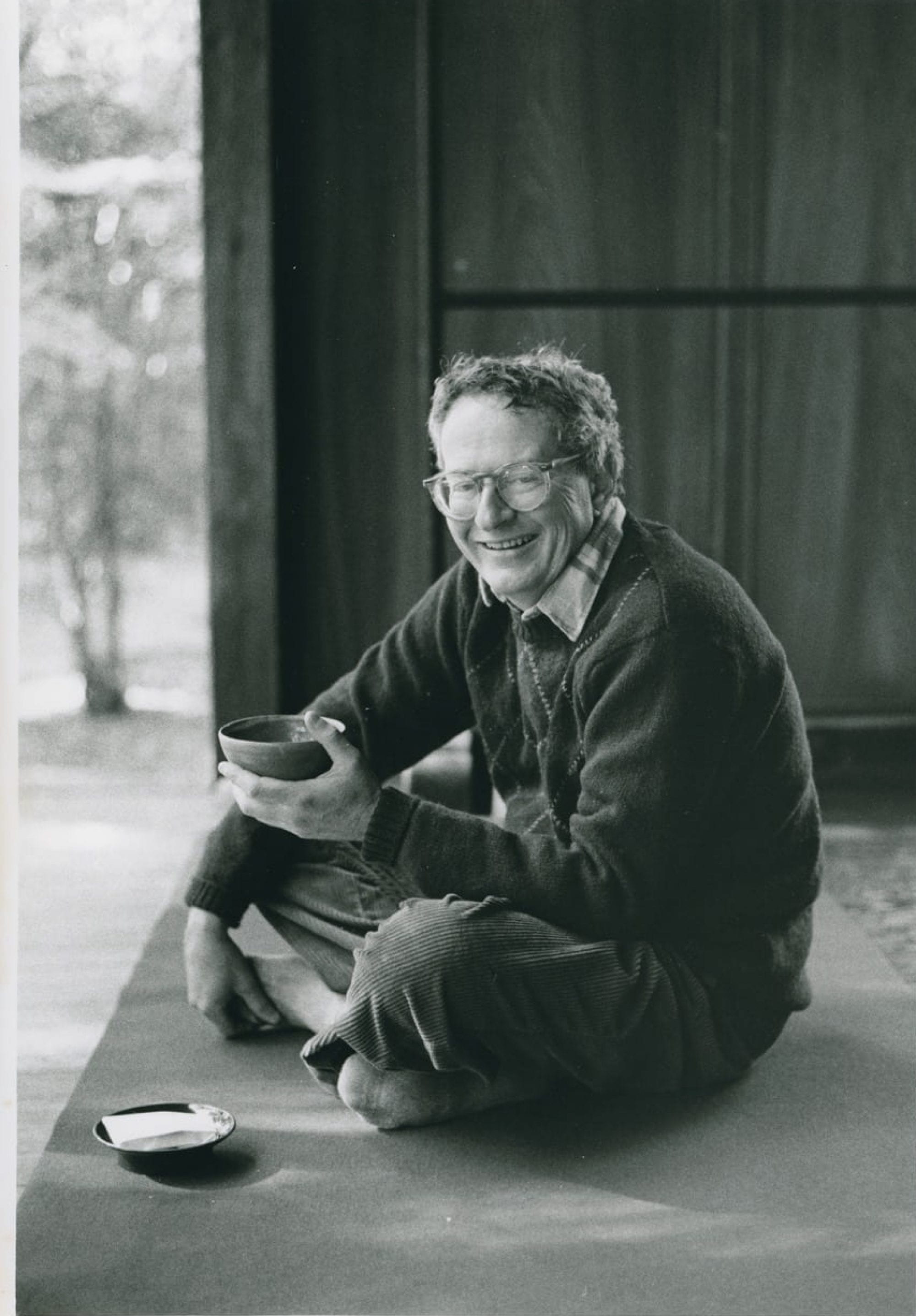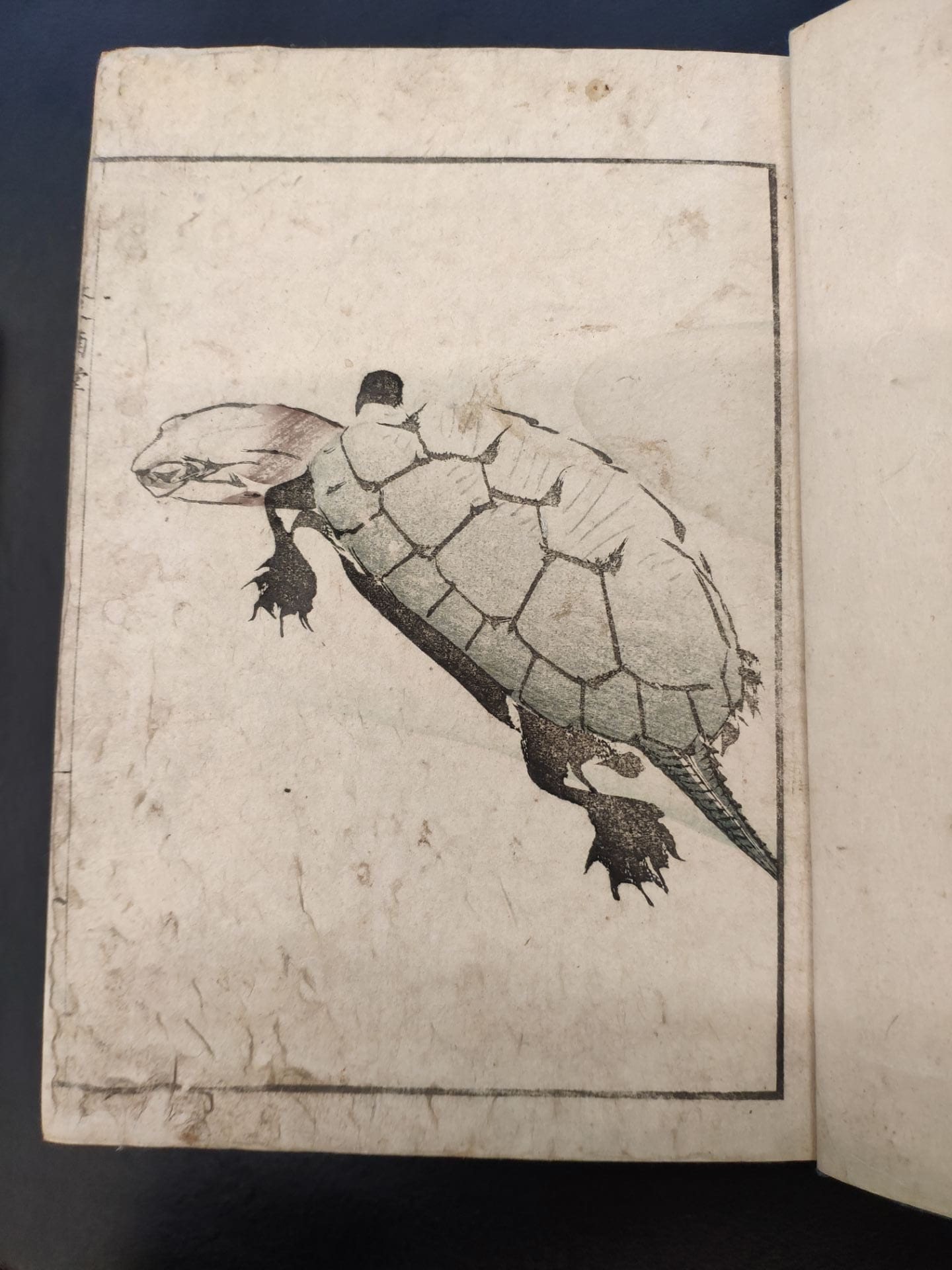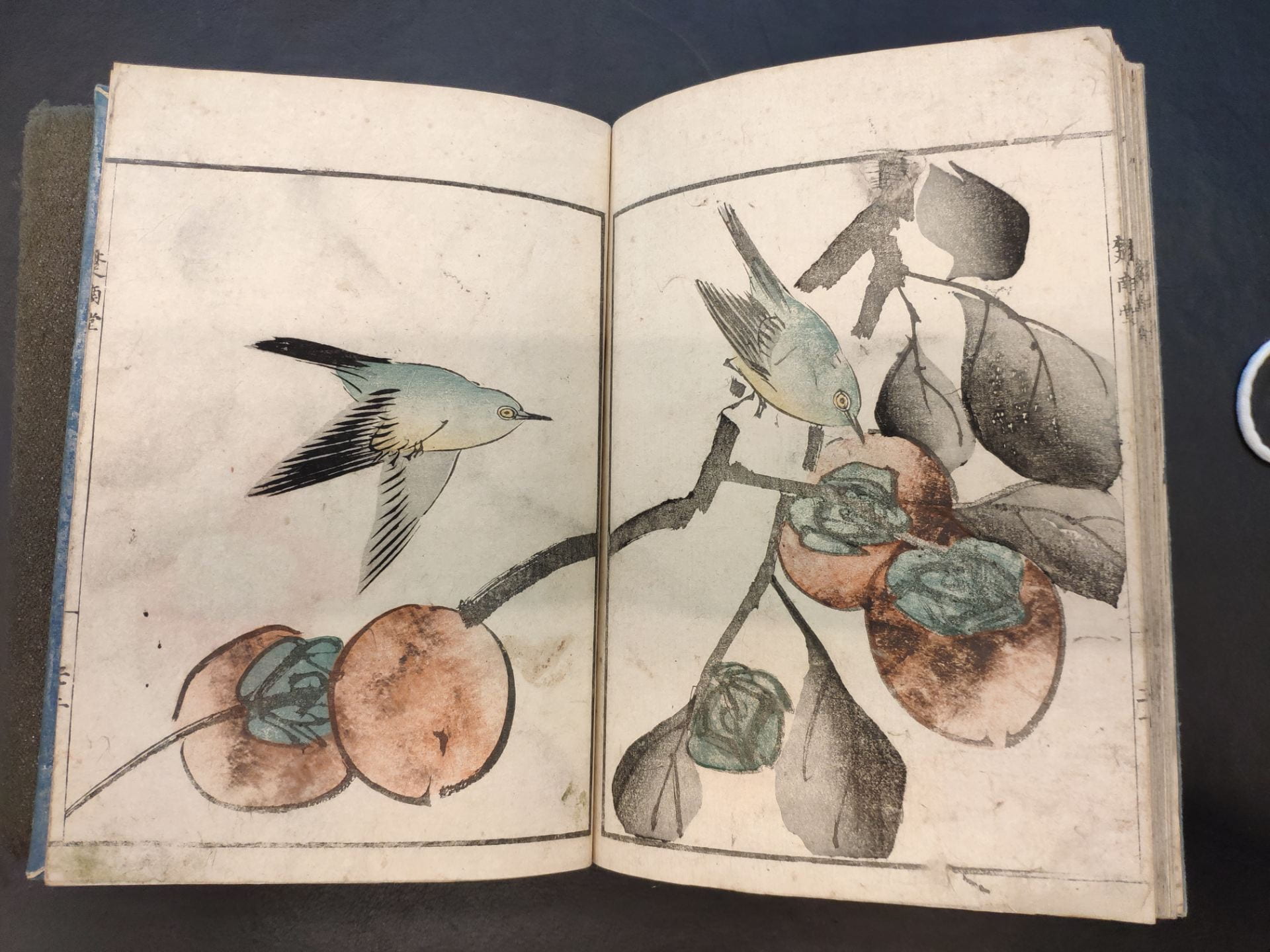Artist: Ōnishi Chinnen 大西椿年
Date: 1834
Medium: fukurotoji (pouch binding), woodblock printed; ink and color on paper; paper covers
Publisher: Ōsakaya Genbei, Kobayashi Shinbei
Gift of Arthur Tress, Tress Box 8, Item 2, https://franklin.library.upenn.edu/catalog/FRANKLIN_9977502571303681
Other Known Copies: The Pulverer Collection in the Freer Gallery of Art, National Institute of Japanese Literature, The British Museum, The Art Institute of Chicago, Museum Volkenkunde (Leiden), and New York Public Library
This album is one of Ōnishi Chinnen’s best known works published under his artist name, Sonan. The Sonan gafu is a luxurious book showcasing the skillful hand of Chinnen, one of the most accomplished artists trained under the Shijō school, which was particularly lauded for its elegant portrayals of the natural world. In the Sonan gafu, Chinnen exhibits his artistic range in 25 double-page illustrations that feature everything from botanicals to bucolic boating parties. The variety of subjects covered in this album distinguish the work from Chinnen’s earlier book, Azuma no teburi, which presented illustrations that were centralized around a single theme of modern life in the Eastern capital of Edo.
The subjects of Sonan gafu dwell far from the metropole and their gentle pace of living is evoked immediately in the album’s opening image of a turtle. Subjects of the natural world are interspersed amongst scenes of folklore, making the reading experience of Sonan gafu one of serene pleasure and visual escape. In one scene, Chinnen depicts a handsomely dressed woman on the cusp of painting—her calligraphy brush teasingly grazes an unfurled scroll. The whiteness of the unpainted scroll is contrasted with the ornately patterned fabric of the woman’s costume. Chinnen’s manifold acts of painting in this image—both his and the promise of the woman’s—form layers of meaning and rendering intrinsic to the processes of block-printing that were used to make the image. The resulting interplay between the artist, the image, and the audience is what animates Chinnen’s delicate compositions into lively and engaging subjects.
Selected Reading:
Brown, Louise Norton. Block Printing & Book Illustration in Japan. London: Routledge, 1924, pp. 106.
Hillier, Jack. The Art of the Japanese Book. New York: Sotheby’s Publications, 1987, pp. 768-72.
Keyes, Roger S. Ehon: The Artist and the Book in Japan (The New York Public Library in association with the University of Washington Press, 2006).
Mitchell, C. H., with the assistance of Osamu Ueda. The Illustrated Books of the Nanga, Maruyama, Shijo and Other Related Schools of Japan. A Biobibliography (Los Angeles: Dawson’s Book Shop, 1972).
Toda, Kenji. Descriptive Catalogue of the Japanese and Chinese Illustrated Books in the Ryerson Library of the Art Institute of Chicago (Chicago: 1931; repr., Mansfield Centre, CT: Martino Publishing, 2004).
Posted by Ann Ho, Fall semester, 2019







